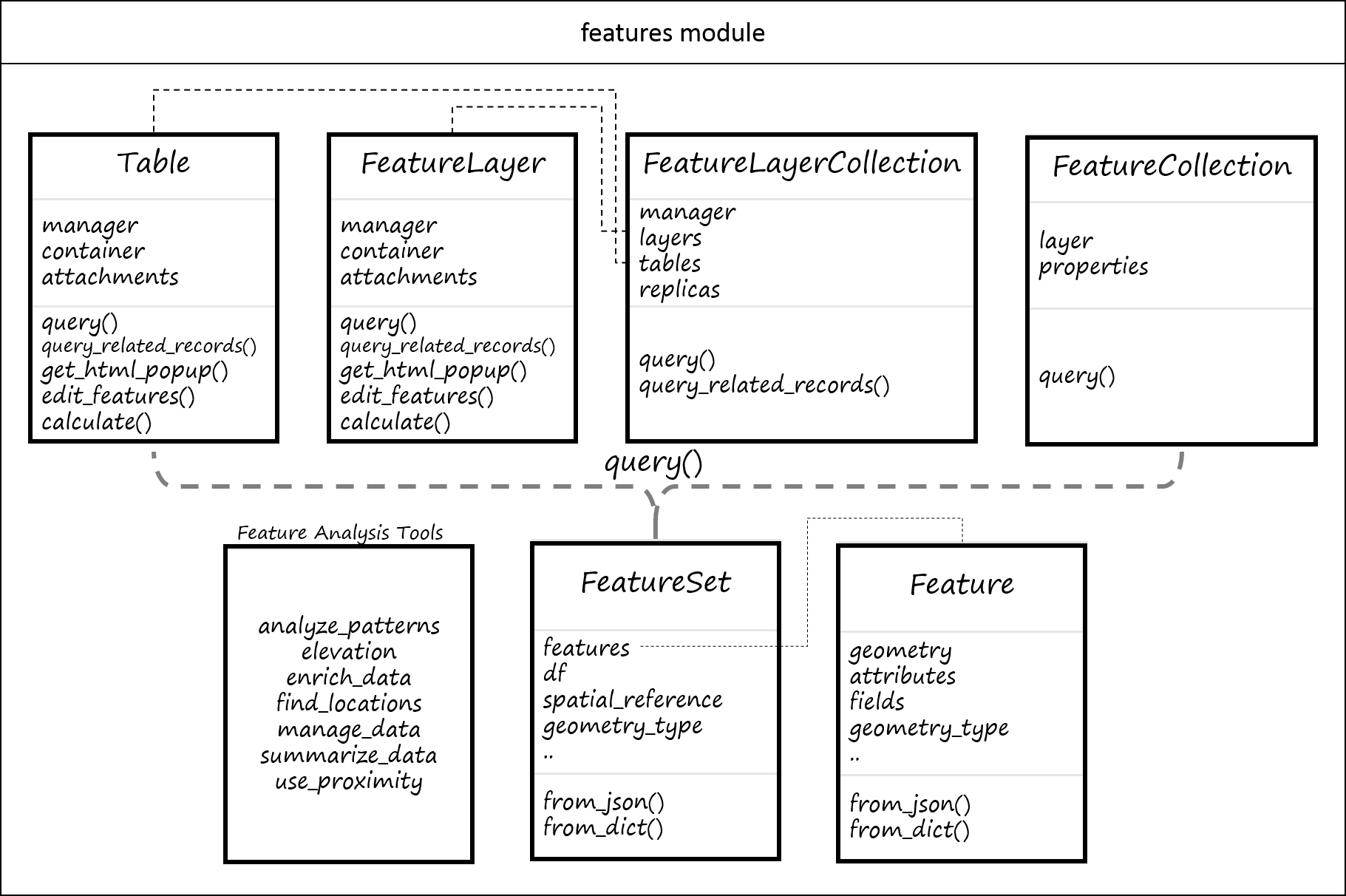In a GIS, 'features' refer to entities located in space with a set of properties. This is a fundamental concept of GIS and you use a Feature object to represent each of your spatial and at times non-spatial data entries at a fine grained level.
For instance, if your spatial data were to represent the major cities in the US, then your data would be represented as a bunch of points spread throughout the country. Each point would contain a spatial information in the form of coordinates and tabular data to represent the point's name and other attributes such as population, size etc. Thus each city in this example would be a Feature object.
While the Feature object allows you to represent your individual data elements, the features module contains classes such as FeatureSet, FeatureLayer and FeatureCollection that allow you to represent grouping of your Feature data at different levels. Thus in the same example as above, the set of all point features in a layer (cities, in this case) would be represented by a FeatureSet object.
Extending this data organization concept further, in a web GIS, you would store the cities data either as a web feature layer or a feature collection and you would search for and access it as an Item using the API. Calling the layers property on this Item returns you a collection of either FeatureLayer or FeatureCollection objects. Querying these objects using the query() method would return you a FeatureSet object described earlier, which in turn can provide you all your Features.
Object model diagram of the features module
The picture below illustrates how the features module is organized

Refer to the rest of the sections in this module to learn how to access your features, analyze and process them
Getting familiar with features module
Working with feature data
Analyzing feature data
- Analyzing patterns in feature data
- Discovering suitable locations in feature data
- Performing proximity analysis on feature data
- Summarizing feature data
To understand how a number of these topics and tools work in synchrony, refer to the samples in 'GIS Analysts and Data Scientists' section, particularly the Chennai floods analysis sample.